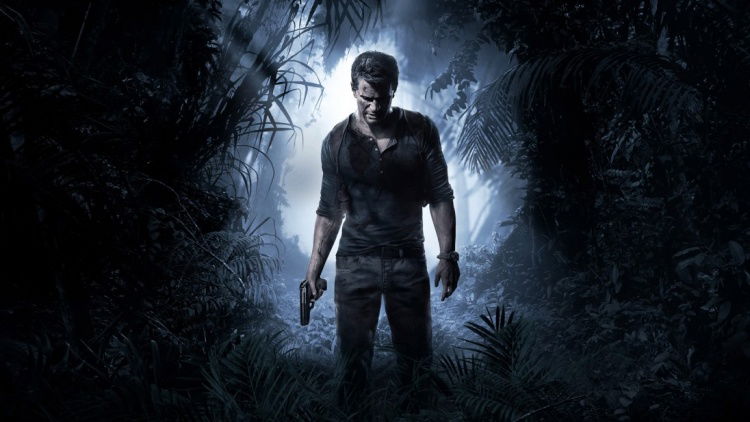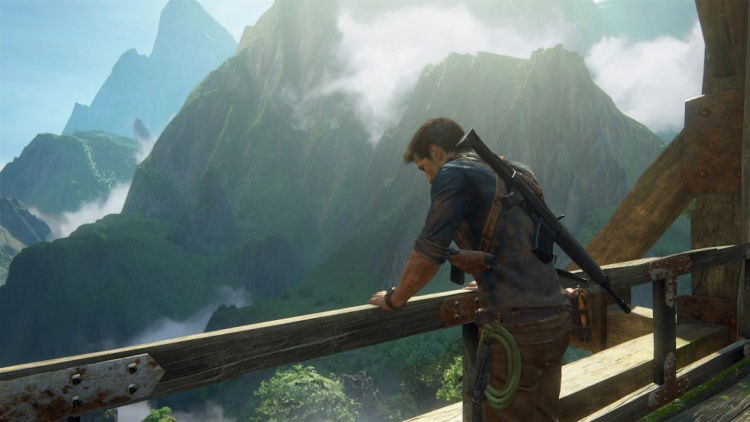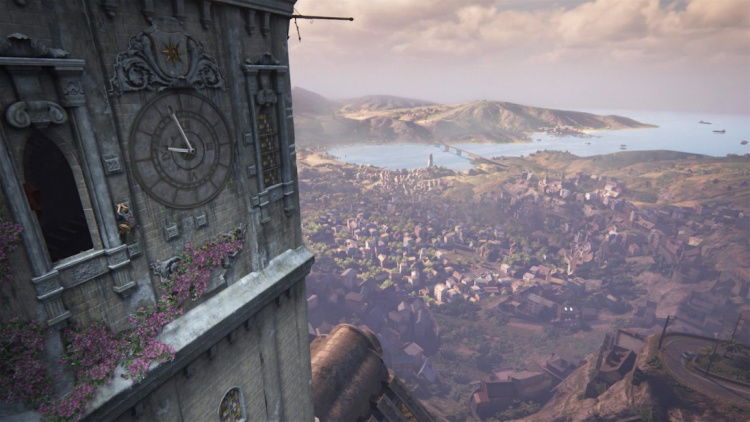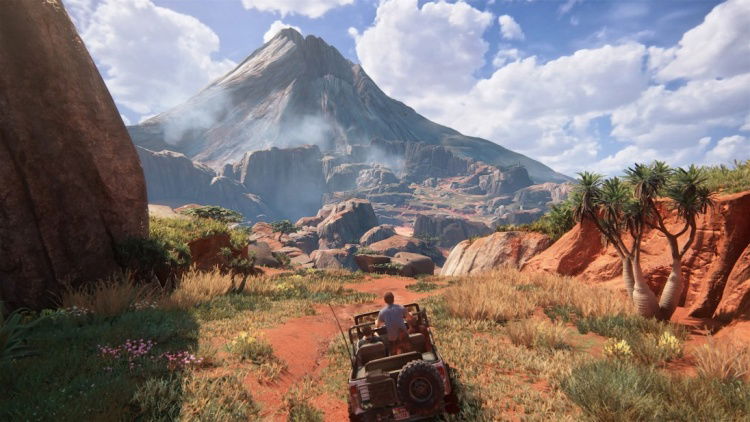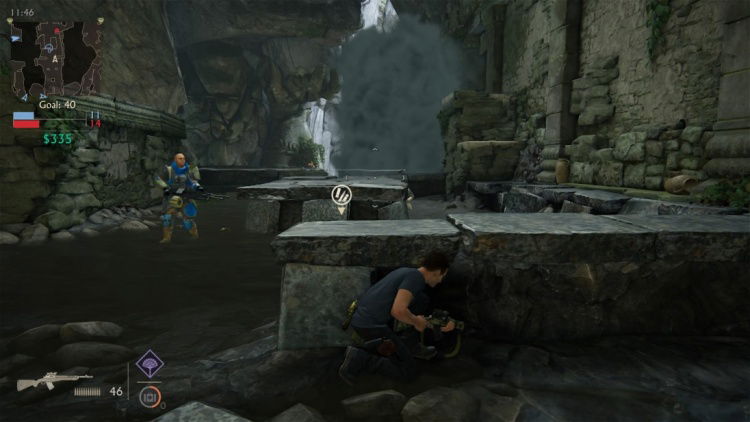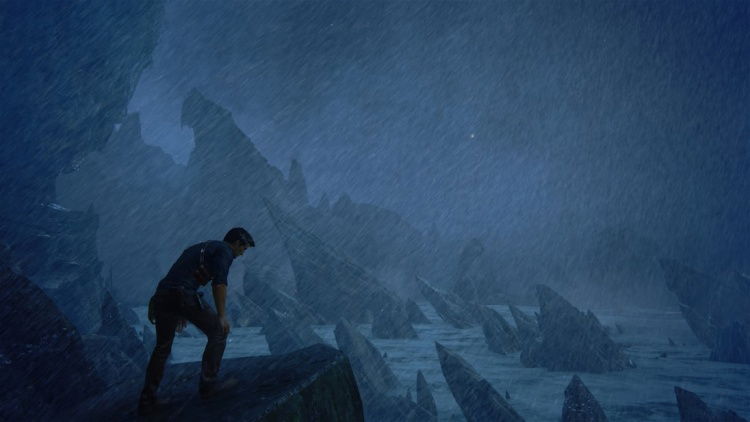The Uncharted series could have easily ended with Drake’s Deception. The third entry in the series provided a sense of satisfying closure to the relationship of Nate and Sully, rekindled the matrimony of Nate and Elena, and effectively closed the door on Nate’s obsession with his ancestry. While an imperfectly told story, it tied up several loose ends and left everyone on a cheery note, possibly bringing Nathan Drake’s story to a close.
I’m so damn glad it didn’t.
Game Name: Uncharted 4: A Thief’s End
Platform(s): PlayStation 4
Publisher(s): Sony Interactive Entertainment
Developer(s): Naughty Dog
Release Date: May 10, 2016
Price: $59.99
Uncharted 4: A Thief’s End opens in media res, providing an effect not dissimilar to the start of Uncharted 2, followed by an important sequence of events that provide context to the main plot device of the game: Nathan Drake has a brother who was thought to be dead. Now in retirement from treasure hunting, Nate is tracked down by Sam Drake, who reveals he’s alive and needs his brother’s help if he wishes to stay that way.
From the start, this game is dripping with history. Not only in the usual way that Uncharted games are, what with taking real-life historical figures and building treasure quests around their past travels, or even in a way where after 3 previous titles, things are constantly being referred to by several of the main characters. Uncharted 4 manages to build an entire character and fit them into the grand scheme in a matter of minutes. Sam is new, but after his introduction you almost completely forget about that. It’s like he had been there the entire time and you were simply waiting for him to show up. I cared about him and his character almost instantly.
There is a lot on the line this time around. Nate comes out of retirement to save his brother from a dangerous threat after trying to maintain a normal life with Elena. Even dragging Sully along, the brothers go up against an old comrade, Rafe Adler, and his hired army of mercenaries in an attempt to find the long lost treasure of the famed pirate Henry Avery before Rafe does. Learning the motivation of both sides along the way, this is by far the most grounded and mature tale Uncharted has ever presented and the best at that. There is still plenty of charm and humor abound but the peril at hand is constantly apparent.
The world of the game is gorgeous. Whether you’re in the middle of a city or in the wilderness of a jungle island, any screenshot taken could make a fitting framed photo (also of note, every shot taken in this review was done using the in-game Photo Mode). What’s even more impressive to me is Naughty Dog’s attention to detail. Not even things like textures or simple animations, but walking through a crowd brings out an actual reaction from the populace. Nathan will turn to squeeze through a group of people, touch them on the shoulders, and say “excuse me.” This isn’t an occurrence I commonly see. These characters, their facial expressions, and their conversations make them feel like real people. It’s the most cinematic and borderline lifelike experience Naughty Dog has ever released.
The cinematic feeling isn’t only restricted to the character interactions or narrative respite either. The core gameplay of Uncharted is still present, with shootouts galore and a bevy of firearms to utilize during. However, the encounter areas are built to be more of a sandbox, rather than a linear area to steadily work your way down. You are free to fire at will, be stealthy, or even forego combat altogether if you can manage. This is largely in part due to the wider level design and use of the grappling hook, a new mechanic that allows Nate to attach and swing on a rope from an attachable object in the environment. Whereas this combat is now more flashy and allows for more variation, the real cinematic feeling comes from the incredible setpieces this series is known for. A cutscene can lead directly into a combat encounter or player interaction and besides having sudden player control, you almost can’t tell where the transition from cinematic to gameplay actually occurs. The HUD (which is much more stylized than previous games) can pop up during this transition and it struggles to remove me from the experience. Frequently that event would occur during the construction (or destruction) of a setpiece, which is where my key focus primarily was anyway.
The set pieces and puzzles in this game are stunning. While making frequent use of certain things like Nate jumping to a ledge and it breaking, or a collapsing structure while Nate is inside of it (all Uncharted classics), they don’t necessarily feel aged. They manage to maintain some feeling of excitement and fear for what happens next, likely due to the impressive engine and environment everything is built in. The puzzles weren’t entirely left to small scale mechanisms inside dank tombs or large mechanisms inside massive towers. Part of it was given to the few large, wide open areas the game will send you to, giving you a vehicle and allowing you to explore a bit on your own. Several chapters in the game give the player freedom of exploration to find the path to continue upon, or go searching for treasures and other hidden secrets. You can easily get lost during these sections if you don’t pay attention, but sometimes that’s half the fun.
During those large scale sequences of exploration, the characters will have independent conversations with each other. If you happen to send Nate off to explore a structure, they’ll pause for a moment. Upon returning and driving off to the next location, the character previously conversing will immediately pick up where they left off in an entirely organic and seamless way. This matches the aforementioned attention to detail, but also sends the point home that the writing has ascended to an all new level with this installment. Whether it’s an important scene or during actual gameplay, even during downtime, there is constantly something happening for the player to listen in on, and not a single bad line of dialogue used (that I heard, anyway).
Besides the fantastic story, there is a multiplayer component to the game. Multiplayer functions similarly to how it did in the previous 2 Uncharted games; players can select a player character, choose or create from multiple loadouts of weapons, customize the hell out of their appearance and equipment, and play against each other. This time around however, the supernatural elements from previous Uncharted games play a part. Called “mythicals,” players can equip into their load outs and purchase supernatural abilities to aid the fight, which adds more variability to how matches can play out. Also available are the summoning of buddies, where players can call in an NPC that plays out a certain role, such as a sniper or a heavily armored brute with a heavy machine gun. While robust in its unlocks and amount of things to customize, the multiplayer mode only has 3 game modes so far: Team Deathmatch, Command (capture point), and Plunder (a capture the flag of sorts). More of everything is to come in due time, and the multiplayer certainly is fun, but another mode to play from the start would have been welcome.
Uncharted 4: A Thief’s End is a fitting ending for the story of Nathan Drake. It’s an ending we didn’t even necessarily need. We could have all gone along and imagined for ourselves what happened to Nate, Elena, and Sully after Drake’s Deception. But from presentation to score, script to scene, gameplay to story, this is Naughty Dog’s latest crowning achievement. Depriving us of this ending would have meant depriving us of true greatness.
Summary
Uncharted 4: A Thief’s End is the most interesting, grounded, and emotional tale within the entire series. It is the most visually stunning game Naughty Dog has developed, and has perfected and refreshed much of what the series is so well known for. If you own a Playstation 4 and are looking for an adventure, this is an absolute must-buy. Pros:
- Stellar visuals
- Best story yet
- Unparalleled attention to detail
- Fun multiplayer
Cons:
- Not a damn thing
-
A fantastic achievement in cinematic storytelling


